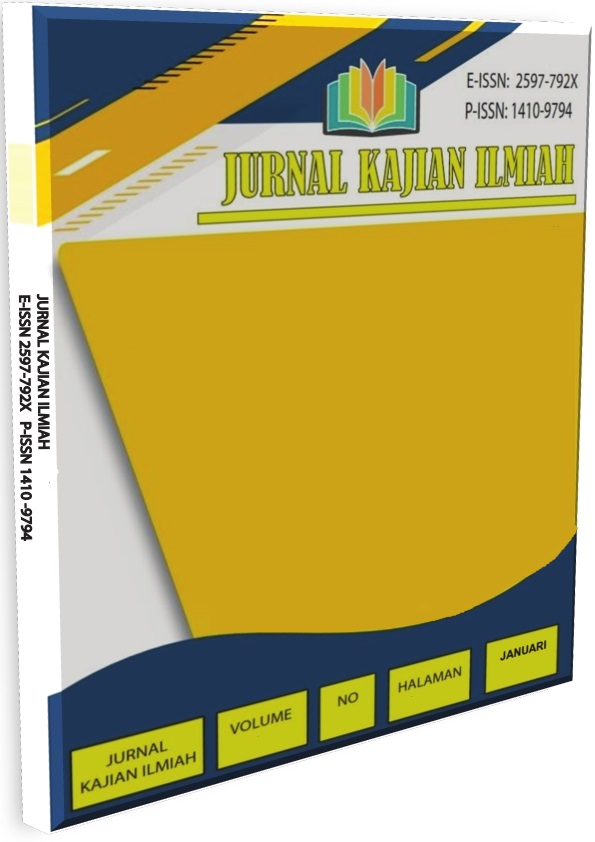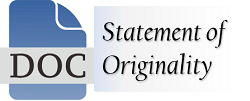Validasi Item Tedeschi-Calhout Post Traumatic Growth Inventory Scale Pada Istri Korban Perselingkuhan
DOI:
https://doi.org/10.31599/6yskjz22Keywords:
Affair, Posttraumatic Growth, WifeAbstract
This study aims to validate the posttraumatic growth scale developed by Tedeschi and Calhout, known as the 21-item Tedeschi-Calhout (21-item PTG) for wife respondents who have had an affair. The scale validation method uses the Single Trial Administration approach which produces an estimate of internal consistency reliability using the Chronbach's Alpha method. The 21-item Tedeschi-Calhout (21-item PTG) validation sample used in this study consisted of 260 wives who were victims of infidelity. working. From the results of statistical analysis using SPSS software, it was found that all items on the 10-item CD-RISC scale were declared feasible. The reliability coefficient value was 0.829, so it can be concluded that the 21-item PTG scale is reliable and can be used for data collection.
Downloads
References
Adetya, S. (2022). An Analysis of Self-Compassion Influence on Post Traumatic Growth with Resilience as Moderation Variable. Jurnal Bimbingan Dan Konseling, 9(1), 133–140.
Alifah, N. N. (2022). Tingkat Perceraian di Indonesia Meningkat, Apa Penyebabnya? GoodStats.
Amato, P. R. (2014). Učinci rastave braka na odrasle i djecu: Najnoviji nalazi. Drustvena Istrazivanja, 23(1), 5–24. https://doi.org/10.5559/di.23.1.01
Antasari. (2011). Peran Dukungan Sosial Terhadap Pertumbuhan Pasca Trauma: Studi Meta Analisis. Jurnal Psikologi, 6(1).
Arikunto, S. (2013). Prosedur Penelitian Suatu Pendekatan Praktik (Edisi Revi). PT. Rineka Cipta.
Asiyah, S. nur, & Amalia, R. (2020). Post Traumatic Growth pada Wanita yang Bercerai. Indonesian Psychological Research, 2(1), 22–28. https://doi.org/10.29080/ipr.v2i1.218
Azwar, S. (2012). Reliabilitas dan Validitas. Pustaka Pelajar.
Azwar, Saifuddin. (2017). Penyusunan Skala Psikologi. Pustaka Pelajar.
Calhoun, L.G. & Tedeschi, R. G. (2004a). The Foundations of posttraumatic growth:New consideration. Psychological Inquiry, 15, 93–102.
Cann, A., Calhoun, L. G., Tedeschi, R. G., Taku, K., Vishnevsky, T., Triplett, K. N., & Danhauer, S. C. (2010). A short form of the posttraumatic growth inventory. Anxiety, Stress and Coping, 23(2), 127–137. https://doi.org/10.1080/10615800903094273
Cryder, C. H., Kilmer, R. P., Tedeschi, R. G., & Calhoun, L. G. (2006). An exploratory study of posttraumatic growth in children following a natural disaster. American Journal of Orthopsychiatry, 76(1), 65–69. https://doi.org/10.1037/0002-9432.76.1.65
Duan, W., Guo, P., & Gan, P. (2015). Relationships among trait resilience, virtues, post-traumatic stress disorder, and posttraumatic growth. PLoS ONE, 10(5). https://doi.org/10.1371/journal.pone.0125707
Ho, S., Rajandram, R. K., Chan, N., Samman, N., McGrath, C., & Zwahlen, R. A. (2011). The roles of hope and optimism on posttraumatic growth in oral cavity cancer patients. Oral Oncology, 47(2), 121–124. https://doi.org/10.1016/j.oraloncology.2010.11.015
Hurlock, B. E. (2006). Perkembangan Anak (Jilid 2). Erlangga.
Istiqamah, N., Meizara Puspita Dewi, E., & Nurhidayat Nurdin, M. (2021). Dinamika post traumatic growth pada wanita pasca bercerai. Jurnal Psikologi Talenta Mahasiswa, 1(2).
Kanako Taku, Arnie Cann, Lawrence G. Calhoun, and R. G. T. (2007). Prevalence and Psychological Correlates of Complicated. 20(3), 251–262. https://doi.org/10.1002/jts
Khan, F., &Aftab, S. (2013). Marital Satisfaction and Perceived Social Support as Vulnerability Factors to Depression. American International Journal of Social Science, 2(5), 99–107.
Lei, M., & Lomax, R. G. (2005). The effect of varying degrees of nonnormality in structural equation modeling. Structural Equation Modeling, 12(1), 1–27. https://doi.org/10.1207/s15328007sem1201_1
Periantalo, J. (2016). Penelitian kuantitatif untuk psikologi. Pustaka Pelajar.
Rahmah, S. (2017). Post Traumatic Growth Pada Remaja Korban Konflik Aceh. Psikoislamedia Jurnal Psikologi, 2(2).
Shafira, F. (2011). Faktor-faktor Yang Mempengaruhi Posttraumatic Growth Pada Recovering addic di Unit Pelaksana Teknis (UPT) Terapi & Rehabilitasi BNN Lido. Universitas Islam Negeri Syarif Hidayatullah Jakarta.
Sudaryono. (2014). Teori dan Aplikasi dalam Statistik. CV Andi Offset.
Sugiyono. (2016). Metode Penelitian Kuantitatif, Kualitatif, Dan R&D. Alfabeta.
Suhan, Y., Sakaria, S., Genda, A., Haris, A., Amin, A. R., & Amin, A. R. (2020). Pelabelan Masyarakat Perdesaan Terhadap Janda Muda Di Desa Sailong Kecamatan Dua Boccoe Kabupaten Bone. Hasanuddin Journal of Sociology, 2(2), 145–156. https://doi.org/10.31947/hjs.v2i2.12865
Tedeschi, R. G., & Calhoun, L. G. (1996). The posttraumatic growth inventory: Measuring the positive legacy of trauma. Journal of Traumatic Stress, 9(3), 455–471. https://doi.org/10.1002/jts.2490090305
Thombre, A., Sherman, A. C., & Simonton, S. (2010). Religious coping and posttraumatic growth among family caregivers of cancer patients in india. Journal of Psychosocial Oncology, 28(2), 173–188. https://doi.org/10.1080/07347330903570537











_-_Copy1.jpg)




